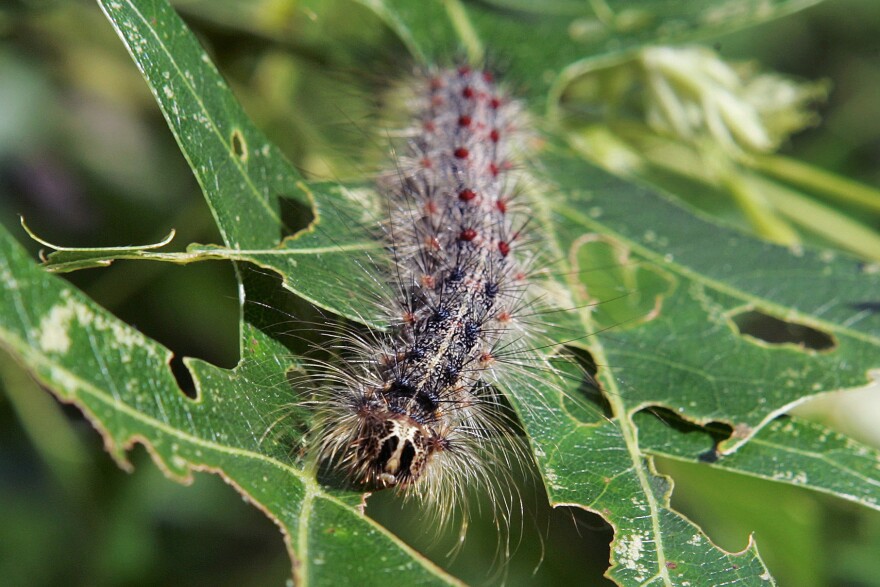You may not like a rainy May day, but a fungus which protects Connecticut trees from an invasive bug loves it.
The spongy moth caterpillar feeds on tree foliage during the spring. If their numbers grow to infestation levels, entire swaths of trees can be stripped bare.
But a fungus introduced from Japan kills them and that fungus needs rain to live and be effective.
A dry spring last year led to more than 40,000 acres of defoliation in Litchfield County alone, said Chris Martin, the state’s director of forestry.
“If we have consecutive dry springs, that fungus doesn't get activated and the populations just compound," he said. "These next couple of weeks will be pretty critical as far as what's going to actually happen because the egg masses are hatching as we speak.”

Trees cannot handle the stress of consecutive years of defoliation and they often die. That's what happened to tens of thousands of oak trees in Middlesex County between 2017 and to 2019. It was those dead trees which fed last week’s Middletown brush fires, Martin said.
“Those trees acted as ladder fuels, where the fire climbed up the trees," he said. "The wind embers then flew off the top of those trees, creating more fire."
What's the prognosis for Connecticut if the fungus isn't activated this year?
“It's a potential powder keg," Martin said. "Yep, I won't mince my words. “





